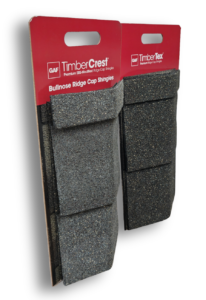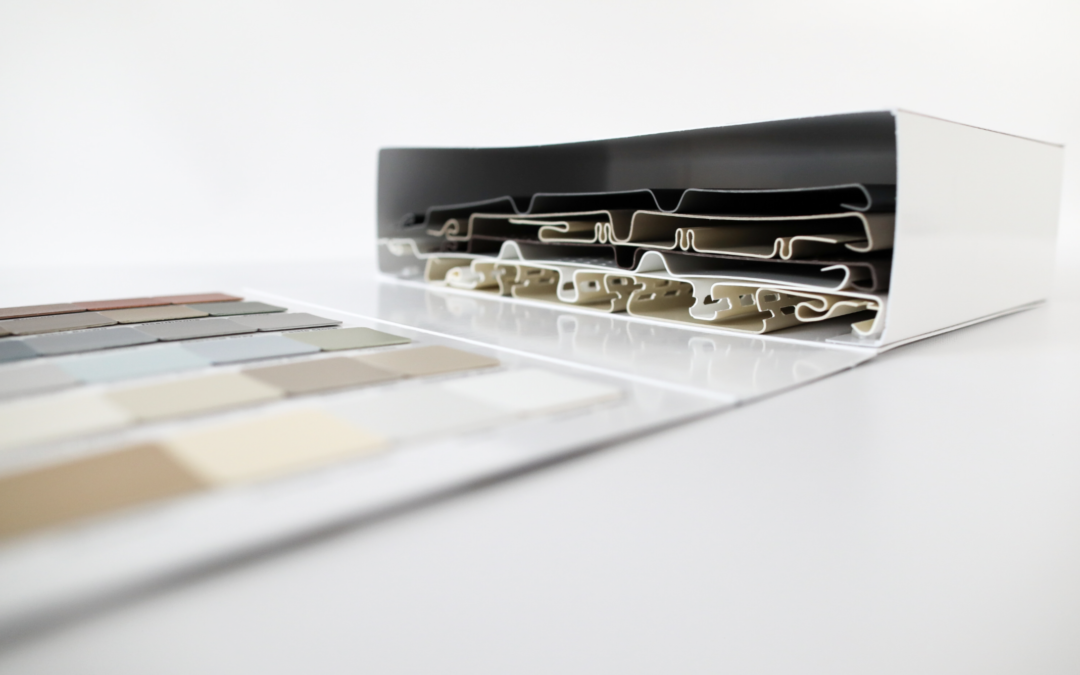In the building materials industry, seeing is believing. Sometimes a single sample chip or photo can’t tell the full story. 3D product visualization through miniature, tangible mock-ups of products give customers a real-world perspective, helping them understand performance, scale, and detail before installation.
When a Flat Sample Isn’t Enough
Flat building material samples and images have limitations. Lighting, perspective, and texture can distort perception, leaving customers unsure how a product will look in its intended application. 3D samples bring materials to life, allowing customers to see and touch the product as it would exist in a real environment.
This hands-on experience is especially valuable for products with depth, layers, or intricate profiles, such as roofing or architectural trim. It provides a sense of scale and realism that two-dimensional visuals simply cannot replicate.
Case Study: TimberCrest Ridge Cap
 A standout example comes from a collaboration with GAF, a leading roofing manufacturer. GAF wanted a way to demonstrate their TimberCrest Ridge Cap in a realistic and engaging format. Rather than relying on flat samples or photos, a 3D miniature sample was created to replicate how the ridge cap would appear on a finished roof.
A standout example comes from a collaboration with GAF, a leading roofing manufacturer. GAF wanted a way to demonstrate their TimberCrest Ridge Cap in a realistic and engaging format. Rather than relying on flat samples or photos, a 3D miniature sample was created to replicate how the ridge cap would appear on a finished roof.
These roof samples allowed customers to see the interaction between different product profiles in a scaled-down yet realistic format. Customers could examine texture, angles, and layering, building confidence in the product’s performance before making a purchase decision.
The project also highlighted the importance of creative problem-solving and cross-team collaboration. Engineers, designers, and production experts worked together to ensure the sample was both accurate and visually compelling, enhancing the brand’s ability to communicate product value effectively.
Best Practices for Building Material Samples
When designing 3D building material samples, consider these key strategies:
- Focus on real-world application: Show how the product functions and fits into its environment.
- Engage multiple senses: Allow customers to see, touch, and examine the material closely.
- Use accurate scaling: Ensure dimensions and proportions reflect actual installations.
- Collaborate internally: Bring together engineering, production, and design teams to achieve precision and realism.
A thoughtfully crafted 3D sample is an experience. Customers gain a clearer understanding of what they’re purchasing, reducing uncertainty and building trust in the brand.
The Marketing Advantage of 3D Product Visualization
3D product visualization and realistic building material samples are powerful tools for brands looking to “win the moment.” They bridge the gap between concept and reality, giving customers a tangible experience with the product. Brands that invest in interactive, detailed samples communicate quality, attention to detail, and customer focus—key differentiators in a competitive market.
For building materials companies, investing in context-rich samples can transform the customer experience, increase engagement, and ultimately drive sales and brand loyalty.
Transform the way customers experience your building materials with realistic, tactile 3D samples. Get started on your custom sample today, and show your products in their best light.


